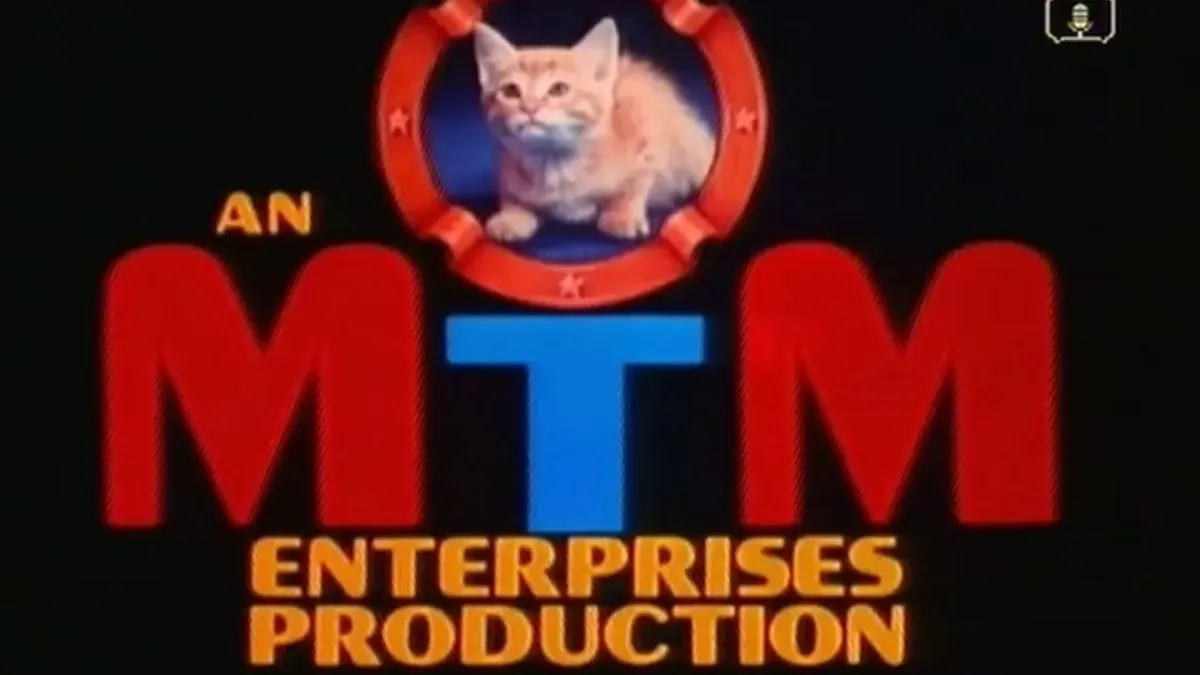The 1970s sitcom divide that still secretly rules American TV comedy
Though less and less of it with every year

If you want to understand the American sitcom, there are worse places to start than the 1970s. TV critics have often called whatever era they're living in "TV's Golden Age," but the 1970s was the first time when that idea reached critical mass, as a long string of sitcoms, led by All in the Family, The Mary Tyler Moore Show, and MASH, seemed to point to a new way forward for American television. The decade is so significant that I wrote an A.V. Club primer on the decade to commemorate the 30th anniversary of the TV season with both All in the Family and MTM debuted.
But now, 40-plus years after those two sitcoms redefined what the sitcom could be, they feel a bit dated and distant. God knows I still love watching old Mary Tyler Moore Show episodes, but I don't know how immediately they'll appeal to someone who didn't spend their entire childhood watching Nick at Nite reruns.
That said, Mary Tyler Moore seems to have aged better than All in the Family, a show I love but a show that all but requires you to immerse yourself in 1970s political turmoil to understand what's going on. It's not that the show has aged badly as much as it is that the show is just permanently trapped in the era in which it was made. This quality appeals to me as a critic and fan of old TV. Your mileage may vary.
But it's worth knowing these two shows, in particular, so you can better understand how American TV comedy is being made right now. The legacies of these two series and the production teams that made them continue to define a major split within TV comedy.

Let's start with The Mary Tyler Moore Show, the first of the two to premiere. Its clearest antecedents are The Dick Van Dyke Show, which ran from 1961 to 1966 and included not just a home/workplace split and a similar sense of humor to MTM but, well, Mary Tyler Moore herself; and He & She, which ran from 1967 to 1968 and featured a vibe of youthful sophistication that MTM would coast off of. (I wrote about the latter here.)
Mary Tyler Moore has been sold by some as the first show about a single woman just living her life and the first workplace sitcom. Neither is strictly accurate, but the particular blend of influences in Mary Tyler Moore was pretty original to that program, as was its insistence that Mary Richards was more interesting than any man she might romance. The series would never feature the character having a long-term love interest, and the creators (James L. Brooks and Allan Burns) had wanted to make the character a divorcee before CBS balked, thinking viewers would fear she had divorced Rob Petrie, Dick Van Dyke's character from his titular show.
Mary Tyler Moore was a topical show, in that it tackled a world where women were increasingly entering the workforce and where they weren't necessarily expected to get married right away. But it rarely forced social issues into its episode-to-episode storytelling. Its jokes rose out of the characters, with somewhat gentle punchlines and less sharp edges that viewers could cut themselves on. It was an aspirational kind of show, on a limited scale. You might really want to live in Mary's apartment, have her friendships, work at her job. Its writing put character and story before jokes, though certainly the writers on the show could come up with some unbelievably funny comedic setpieces. (Even if you haven't seen this show, you probably know what I just linked to.)
Mary Tyler Moore was the first production by MTM Enterprises (you know, with the kitten), and the company would go on to produce many other great sitcoms through the '70s and early '80s, including The Bob Newhart Show, various Mary Tyler Moore spinoffs, WKRP in Cincinnati, and Newhart (not to be mistaken with The Bob Newhart Show). (Their run of one-season wonders in the '70s is also pretty impressive.) In the '80s, they shifted more aggressively into drama and completely reinvented American primetime drama, with shows like Hill Street Blues and St. Elsewhere, but we're mostly interested in the sitcoms here. Anyway, hold a spot for MTM in your brain. We're coming back to them.
All in the Family debuted in early 1971, after literal years of producer Norman Lear trying to turn the British original into something American television would air. The show bounced from ABC to CBS (which would be sort of the HBO of the '70s), and when it finally made it to air... it was kind of a ratings disappointment. But it would quickly discover an audience, and by the end of its second season, it was the top show on TV.
All in the Family was brash and crass in a way an MTM production wouldn't really dream of. It, too, had amazing characters, but its tone very much put the topic of the week (be it a social issue or a relationship crisis) at the forefront of the storytelling, and then the jokes were used to heighten that topic. There's a forthrightness to the '70s Lear sitcoms that remains bracing to this day, even if you're not entirely sure what Archie Bunker is talking about with inflation or the guys in his union.
All in the Family also, famously, reflected the ways that Americans actually talked about politics and the world. Archie was deeply racist, and the show usually made him the butt of its jokes (though that didn't stop many viewers from idolizing him all the same). But the show was one of the first in TV history to talk about topics like homosexuality and sexual violence, as well as one of the few in TV history to dig into more complicated political topics like labor organizing or the complicated legacy Americans inherit.
None of this would have worked if the show's character writing wasn't strong, just as none of Mary Tyler Moore's advancements wouldn't have worked if the joke writing wasn't strong. But when we talk about All in the Family, we tend to talk about it as a show that broke ground in terms of what it was talking about, and when we talk about Mary Tyler Moore, we tend to talk about it as a show that broke ground in terms of what kinds of stories it was telling.
Lear, of course, went on to dominate the '70s, with additional shows that put topical humor first, shows like Sanford and Son and Maude and The Jeffersons. He would end the decade producing equally groundbreaking shows that didn't become as massive of hits, like Mary Hartman, Mary Hartman. And he would spend a lot of the years following in the wilderness, occasionally popping up to make a new TV show or two.
By and large, the history of American TV comedy post-1970 has been the story of the MTM approach and the Lear approach waxing and waning in favor. If you trace the lineage of the various writers rooms on some of your favorite shows, you'll see, for instance, a direct line that runs all the way from Mary Tyler Moore to Taxi to Cheers and on and on until you get to The Office and Parks and Recreation. You can do something similar by drawing a line from Lear's work through assorted '80s shows until you finally land on 30 Rock.
Now this is not a clear-cut lineage. Both the MTM and Lear approaches have become so fully subsumed in American sitcommery that basically any sitcom worth its salt will have ample doses of both approaches inside of it. But most good shows tend to lean slightly toward one or the other a little bit more. It's a little reductive to say that pathos-ridden comedies that have a sneaky interest in making you cry are MTM descendants, while anything-for-a-joke comedies that want to constantly undercut sentiment are Lear descendants, but it's also not wrong.
(Important sidebar: There's another big TV comedy revolution happening in the '70s out in New York. Yes, it's Saturday Night Live. That show's heritage is also incredibly important to the history of TV comedy, but its approach to joke construction was platform agnostic, more or less, which meant that it was adopted by both sides of this "debate" about equally. Nevertheless, there is a heavy dose of "New Yorkness" to SNL that has to exist for, say, Seinfeld and its many descendants to come about.)
I'm not trying to say either of these approaches is better than the other. I tend to prefer the MTM approach, but when it's abused, it creates shows that are drenched in bathos, begging you to FEEL SOMETHING. And the Lear approach, at its worst, can feel a little thin and mean, like the show itself thinks you're a little stupid for watching it. Or, put another way: The Simpsons is an MTM show; South Park is a Lear show. And both shows at their best and worst exemplify the best and worst of the two approaches almost perfectly.
I do not know how much use this information will be to you, honestly. I've always found it a useful way to think about American TV comedy. The influence of both schools of comedy writing has been waning in recent years, especially as more and more shows achieve a kind of weird synthesis of both approaches. (I don't think I could peg Community as one or the other approach easily, except to say some episodes are more MTM and some are more Lear.) We're entering a phase of TV comedy's evolution where the groundbreaking sitcoms of the '90s and 2000s are more important, and that's okay. Yes, those shows were influenced by the '70s sitcoms we're talking about, but at a certain point, something drifts so far from its point of origin that it's not worth talking about.
Still, the next time you're watching one of your favorite shows, take a look at who created it, then trace that lineage back as far as it will take you. I'm willing to bet you'll land on either a show produced by Norman Lear or a show made by MTM. And once you know that, see how much of that lineage survives.
Talk back to me: Which approach do you prefer and why? Are there shows from your preferred approach that you just can't stand? Shows from the other approach that you adore? Mix it up in comments! Or send me an email, I guess.
What I've been up to: Well, I had surgery. That really takes a lot out of a girl. I have some cool shit coming up at Vox that I can't wait for you to read, but in the weeks since I last ran this feature, I've written a lot about Succession, including my latest piece, on what the show gets about abuse survivors.
As Succession season three continues to unfold, pay attention to how often the show’s directors include many of the actors from the show’s considerable ensemble cast lurking in the same shot. These shots are peppered throughout “Mass in Time of War,” and they’re often used to contrast how the different Roy siblings react when Logan is either mentioned or makes his presence known via pastry. Some of them recoil, some of them sit up a little more sharply, some of them just look away. But they’re all reacting, often in very different ways.
What you missed if you're not a subscriber to Episodes: I'm so thankful to my freelancers for keeping the lights on here while I was out. Make sure that you check out some of their pieces, including this take on the great tabletop game Sleepaway, this take on empty American horror, and this amazing article on Charlie Day in Pacific Rim and non-binary identities. (That last one is available to all subscribers, so consider it a free preview.)
I think I thought I was a trans man. Just for a moment.
It was on my seventh watch of Pacific Rim. (Y’know, the Guillermo Del Toro movie from 2013 with giant robots that punch giant aliens. It went on to have a pretty poor sequel in 2018.) There’s a scene featuring Newton ‘Newt’ Geiszler, portrayed by Charlie Day, showing off his tattoos. Newt is a little pathetic. Kind of scrawny. He squawks when he’s excited and he’s confident that he is always correct. He runs into danger assfirst.
And he’s a mad scientist. Oh, sure, if you look up “canon” lists of mad scientists, you won’t find him there. But I would argue that anyone who fuses their brain with an alien hive mind for the greater good of humanity is at least a little mad.
Read me: I had a great time at Dune, and one of my favorite pieces of criticism of the film is this piece by Roxana Hadidi on the property's seeming disinterest in casting actors of MENA/WANA descent. I learned a lot reading it!
Padishah, Sunni, Mahdi, Lisan al Gaib, jihad. All are terms that Herbert uses throughout Dune, and all are pulled from MENA languages and culture and Muslim ideology. Literary scholars who have analyzed Dune note them as essential components of Herbert’s narrative arc, yet movie and TV versions of Dune tend to diminish their importance, or leave them out entirely. In September 2020, the first trailer for Denis Villeneuve’s Dune: Part One was released, with a prominent focus on the term “crusade” rather than “jihad.” (Neither “jihad” nor “crusade” makes it into Dune: Part One; instead, Villeneuve and fellow screenwriters Jon Spaihts and Eric Roth settle on “holy war.”) Dr. Ali Karjoo-Ravary, assistant professor of Islamic Studies at Bucknell University, noted the language choice in an October 2020 Al Jazeera column. For Karjoo-Ravary, the absence of the word “jihad” obfuscates Herbert’s deliberate characterization of the Fremen, whose identity Karjoo-Ravary describes as “some future variety of Islam and Arab,” adding that “if it was real and people today saw it, they’d call it Islam.”
Watch Listen to me: The controversy over Netflix's treatment of several trans employees in the wake of Dave Chappelle's recent special, The Closer, largely happened while I was out of the office (though I'm working on a piece related to it). I really appreciated the podcast Cancel Me, Daddy for talking to the trans Netflix employees involved, at some length. It's well worth a listen.
And another thing... YOU CAN'T STOP IT, AMERICA. CHRISTMAS MUSIC IS BACK, AND IT WILL NEVER GO AWAY AGAIN. THIS PLAYLIST IS THE BEST CHRISTMAS MUSIC PLAYLIST THOUGH. CHECK IT OUT.
Opening credits sequence of the week: How can you resist the siren song of "Michael Pasternak as Gobo"?
What I had to look up: Believe it or not, this newsletter was reverse engineered from a "opening credits sequence of the week" segment on Lear's first big flop, the ABC sitcom Hot l Baltimore, which was one of the first TV shows ever to feature sex workers, undocumented immigrants, and a gay couple as regular characters. I went down a rabbit hole on that show, then didn't write about it at all, so here. Here's the opening credits sequence.
This week's reading music: "Gasoline" by HAIM
Episodes is published three times per week. Mondays feature my thoughts on assorted topics. Wednesdays offer pop culture thoughts from freelance writers. Fridays are TV recaps written by myself. The Wednesday and Friday editions are only available to subscribers. Suggest topics for future installments via email or on Twitter. Read more of my work at Vox.




